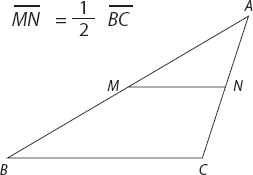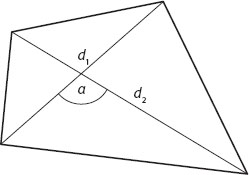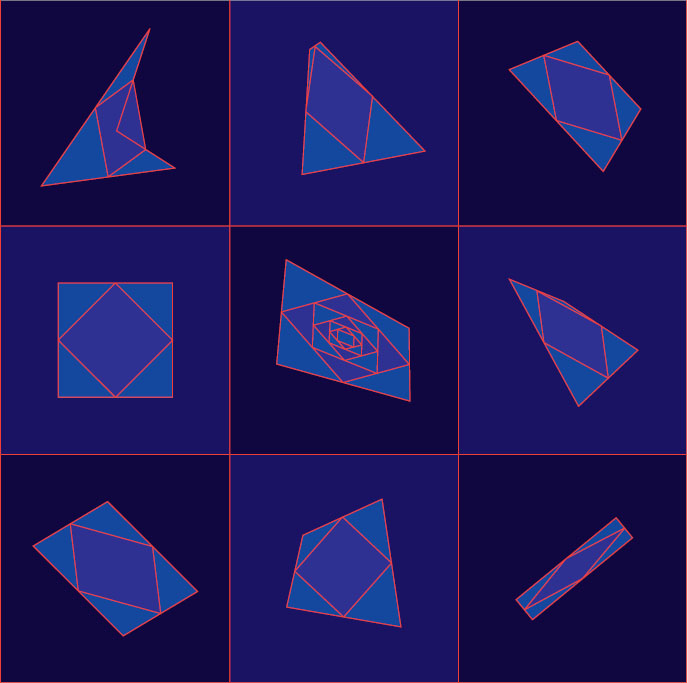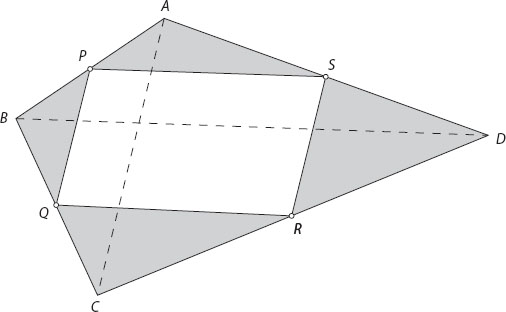Quadrilaterals
Here is a little-known jewel of a theorem that never fails to amaze me: take any quadrilateral (four-sided polygon), connect the midpoints of adjacent sides, and—surprise—you’ll get a parallelogram! The surprise lies in the word any. No matter how skewed your quadrilateral is, the outcome will always be a parallelogram. The theorem holds true even for the dart-shaped quadrilateral shown in the top-left corner of plate 3. And that’s not all: the area of the parallelogram will always be one half the area of the quadrilateral from which it was generated.
The proof is rather short and is based on the following theorem: in any triangle, the line joining the midpoints of two sides is parallel to the third side and is half as long (see figure 3.1). Now let’s apply this to quadrilateral ABCD. Denote the midpoints of sides AB, BC, CD and DA by P, Q, R, and S, respectively (figure 3.2). Line PQ is parallel to diagonal AC, which in turn is parallel to RS. Thus, PQ and RS are parallel. By the same argument, lines PS and RQ are also parallel, so PQRS is a parallelogram—QED. (The proof that it has half the area of the generating quadrilateral is just a tad longer and is given in the appendix.)
Now, of course, you can repeat the process and connect the midpoints of PQRS to get another, smaller parallelogram, as shown in the middle panel of plate 3. In fact, you can do this again and again, getting ever smaller parallelograms whose areas are ½, ¼, ⅛, … of the original quadrilateral, until they seem to converge to a point.
While we are on the subject of quadrilaterals, here is another little-known fact: the area of any quadrilateral is completely determined by the lengths of its two diagonals and the angle between them. In fact, the area is given by the simple formula A = ½d1 · d2 · sin α (figure 3.3). It doesn’t matter how you measure the angle—α or (180° − α)—for we know from trigonometry that sin α = sin (180° − α). It is a pity that these little treasures seldom, if ever, find their way into our geometry textbooks.

Figure 3.1

Figure 3.3


